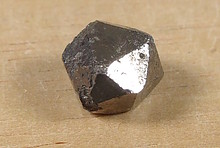Home PageAbout MindatThe Mindat ManualHistory of MindatCopyright StatusWho We AreContact UsAdvertise on Mindat
Donate to MindatCorporate SponsorshipSponsor a PageSponsored PagesMindat AdvertisersAdvertise on Mindat
Learning CenterWhat is a mineral?The most common minerals on earthInformation for EducatorsMindat ArticlesThe ElementsThe Rock H. Currier Digital LibraryGeologic Time
Minerals by PropertiesMinerals by ChemistryAdvanced Locality SearchRandom MineralRandom LocalitySearch by minIDLocalities Near MeSearch ArticlesSearch GlossaryMore Search Options
The Mindat ManualAdd a New PhotoRate PhotosLocality Edit ReportCoordinate Completion ReportAdd Glossary Item
Mining CompaniesStatisticsUsersMineral MuseumsClubs & OrganizationsMineral Shows & EventsThe Mindat DirectoryDevice SettingsThe Mineral Quiz
Photo SearchPhoto GalleriesSearch by ColorNew Photos TodayNew Photos YesterdayMembers' Photo GalleriesPast Photo of the Day GalleryPhotography
╳Discussions
💬 Home🔎 Search📅 LatestGroups
EducationOpen discussion area.Fakes & FraudsOpen discussion area.Field CollectingOpen discussion area.FossilsOpen discussion area.Gems and GemologyOpen discussion area.GeneralOpen discussion area.How to ContributeOpen discussion area.Identity HelpOpen discussion area.Improving Mindat.orgOpen discussion area.LocalitiesOpen discussion area.Lost and Stolen SpecimensOpen discussion area.MarketplaceOpen discussion area.MeteoritesOpen discussion area.Mindat ProductsOpen discussion area.Mineral ExchangesOpen discussion area.Mineral PhotographyOpen discussion area.Mineral ShowsOpen discussion area.Mineralogical ClassificationOpen discussion area.Mineralogy CourseOpen discussion area.MineralsOpen discussion area.Minerals and MuseumsOpen discussion area.PhotosOpen discussion area.Techniques for CollectorsOpen discussion area.The Rock H. Currier Digital LibraryOpen discussion area.UV MineralsOpen discussion area.Recent Images in Discussions
Techniques for CollectorsDissolving mica

17th Apr 2010 12:21 UTCPaul Hewitt
Paul in Pa
17th Apr 2010 12:50 UTCJolyon Ralph Founder
Long answer: No, there isn't.

17th Apr 2010 14:57 UTCAlfredo Petrov Manager
No acids do a good job on muscovite mica, which is remarkably acid resistant.
17th Apr 2010 16:59 UTCSteve Hardinger 🌟 Expert

17th Apr 2010 18:38 UTCDonald Vaughn

17th Apr 2010 23:16 UTCPaul Hewitt
Paul in Pa
7th May 2010 15:45 UTCReiner Mielke Expert
11th May 2010 11:28 UTCRock Currier Expert

29th Mar 2012 20:24 UTCRaheel gee
30th Mar 2012 09:11 UTCRock Currier Expert

30th Mar 2012 19:21 UTCIan Merkel
30th Mar 2012 21:33 UTCRalph S Bottrill 🌟 Manager

8th Sep 2013 15:24 UTCkumar

8th Sep 2013 16:49 UTCA. A. Faller
Just DON'T use acid! get a "pro" to do it for you...

14th Mar 2014 14:53 UTCNorm
Until I started fooling around with a gold pan I had no idea that there was such a thing as gold colored mica. All I had ever seen is silvery mica. Plenty of that around. They used to mine that here.
It may turn out to be a real funny if the few pics I have seen of gold around here turns out to be mica after all from the past prospectors who have no problem "turning color."
I thought the answer might be sulfuric acid but I see that golden shiny mica doesn't react. After a lot of dissolving I still wouldn't know if it's gold or mica. So, what's next? Jeez.

14th Mar 2014 15:07 UTCD Mike Reinke
Gold is much, much, heavier than mica. Gold would be under the black sand, mica on top. The first time I panned on vacation far from where I lived I got excited at the 'gold' in my pan, but it almost floated, so, not gold. I hadn't noticed 'gold' colored mica before either. Heartbroken again...
14th Mar 2014 15:10 UTCReiner Mielke Expert

14th Mar 2014 15:54 UTCDoug Daniels
15th Mar 2014 08:43 UTCRock Currier Expert
15th Mar 2014 22:44 UTCPeter Haas




Mindat.org is an outreach project of the Hudson Institute of Mineralogy, a 501(c)(3) not-for-profit organization.
Copyright © mindat.org and the Hudson Institute of Mineralogy 1993-2024, except where stated. Most political location boundaries are © OpenStreetMap contributors. Mindat.org relies on the contributions of thousands of members and supporters. Founded in 2000 by Jolyon Ralph.
Privacy Policy - Terms & Conditions - Contact Us / DMCA issues - Report a bug/vulnerability Current server date and time: April 27, 2024 02:11:44
Copyright © mindat.org and the Hudson Institute of Mineralogy 1993-2024, except where stated. Most political location boundaries are © OpenStreetMap contributors. Mindat.org relies on the contributions of thousands of members and supporters. Founded in 2000 by Jolyon Ralph.
Privacy Policy - Terms & Conditions - Contact Us / DMCA issues - Report a bug/vulnerability Current server date and time: April 27, 2024 02:11:44











